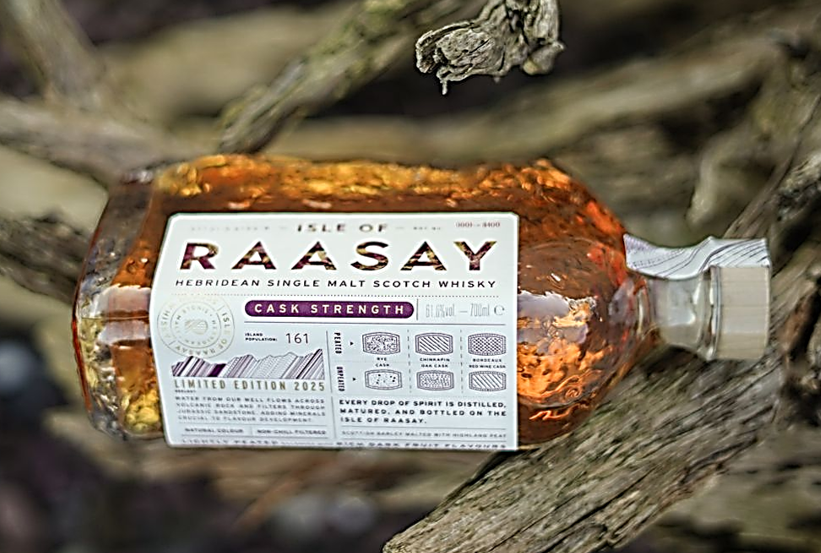At the 2025 Las Vegas Global Spirits Awards, Scotch whisky took center stage. Two modern single malts rose to Platinum status: Isle of Raasay Cask Strength claimed Best Scotch with a near-perfect score of 99/100, while Lindores Abbey secured 98/100. This feature introduces both winners and explains why their distinct approaches convinced veteran judges that these new expressions belong among the world’s elite whiskeys.
The Las Vegas Global Spirits Awards is a U.S.-based, industry-run competition held in Las Vegas that evaluates spirits through fully blind tastings by a panel of veteran judges. Entries are grouped by style and judged on a 100-point scale for appearance, aroma, palate, balance, and finish.
Medals awarded include Platinum, Gold, Silver, and Bronze, with special awards for Best in Category and Best in Show. Producers get judging feedback they can use to improve quality and marketing, and medal results are often highlighted on labels, sell sheets, and retail shelf talkers.
According to Eddie Rivkin, CEO and Founder of the LVGSA, “The Scotch whiskies honored at the 2025 Las Vegas Global Spirit Awards represent the pinnacle of tradition, mastery, and time-honored craftsmanship. Each winner tells a story — of place, patience, and passion — capturing the soul of Scotland in every sip. These extraordinary expressions remind us why Scotch remains one of the most revered spirits in the world.”
Isle of Raasay, Cask Strength, Single Malt Scotch Whisky, 61.6% ABV, 700 ml.
Isle of Raasay is Scotland’s first legal distillery on the tiny Isle of Raasay in the Inner Hebrides. It was founded by R&B Distillers and commissioned in 2017. Raasay’s “house style” is built from two separate new-makes, one unpeated, one lightly peated, that are matured independently and then married.
Their casks mature on the island in a humid, maritime climate with big temperature swings that maximize oak interaction. Raasay is known for its “six-cask” recipe: for each spirit, peated and unpeated. They use three cask types: ex-Rye whiskey barrels for adding spice notes, virgin Chinkapin (Quercus muehlenbergii) oak to add sweet caramel and coconut notes, and ex-Bordeaux red wine barriques to add dark fruit notes and a tannic backbone.
They use Highland peat with the kilning done by their maltster. Highland peat is more potpourri/heathery in character, with cold wood-smoke rather than the iodine/medicinal peats from Islay and coastal areas. The phenols are moderate, and the smoke is less pungent. It’s unmistakable and pervasive, but well integrated rather than dominant.
The whisky features pronounced aromas of dried candied orange zest along with stone fruit notes, especially ripe apricot, along with honeyed malt; floral potpourri/heathery smoke, toasted coconut, and cocoa from the Chinkapin oak barrels; red-fruit hints of blackcurrant and raisin from the wine barriques, and ginger and rye spice.
It’s smooth, oily, and viscous on the palate with a pronounced mouth weight showcasing flavors of toffee and vanilla, grilled stone fruit, berry compote, pink peppercorn, and clove. The smoke is pervasive with a cold and floral potpourri tinged character as if from burning dried heather. There is also a pronounced savory note of maritime salinity.
The finish is long with a layered complexity, featuring lingering notes of dark chocolate, orange zest, baking spice, a dry, floral/heather smoke, and a hint of red-wine tannins.
Lindores Abbey, Lindores Single Malt Scotch Whisky MCDXCIV (1494), 46% ABV, 700 ml.
Lindores Abbey Distillery sits in Newburgh, Fife, beside the ruins of the 12th-century abbey immortalized as the “birthplace” of Scotch whisky. In 1494, Friar John Cor used malted barley “to make aqua vitae” for King James IV. However, contemporary historians believe the aqua vitae was intended for alchemical experiments, not hot toddies!
The modern, family-run distillery, opened in 2017, uses barley from Fife and water drawn from a well on the Abbey lands. The malt is unpeated. Fermentations are prolonged and maintained at a cool temperature to build fruit esters. The copper pot stills are run to produce a light, malty spirit.
Maturation employs a variety of casks: ex-Bourbon, Oloroso sherry, and STR (shaved/toasted/re-charred) red-wine casks, and they are blended to reflect the house style. Lindores also makes a historical herbal spirit (Aqua Vitae), a sort of Scotch whisky precursor, but the core single malt is modern and fruit-forward.
The whisky features orchard and candied fruit aromas of pear drops, apple tart, and lemon peel, along with notes of honeyed malt, vanilla custard, toasted hazelnut, and golden raisins from the sherry and STR wine barrels.
It’s smooth and silky on the palate, showcasing flavors of shortbread, honey, apricot, orange creamsicle, and baking spices: the bourbon casks, vanilla, and coconut. The Sherry casks add walnut and raisin flavors, while the STR wine casks add ripe red fruit and a touch of tannic backbone.
The finish is medium-length and sweet, with lingering notes of almond praline, cooked malt, citrus zest, and light oak spice.
Raasay and Lindores illustrate how contemporary Scotch whisky can be both rooted and adventurous: terroir-driven malt, thoughtful fermentation, and precise cask work yielding depth without excess. Raasay’s heather-tinged smoke and layered oak speak of maritime maturity while Lindores’ orchard fruit and gentle spice celebrate balance and craft. Whether enjoyed neat or with a few drops of water, these Platinum medalists reaffirm why Scotland’s next generation is earning scores—and devotion—to match the legends.

